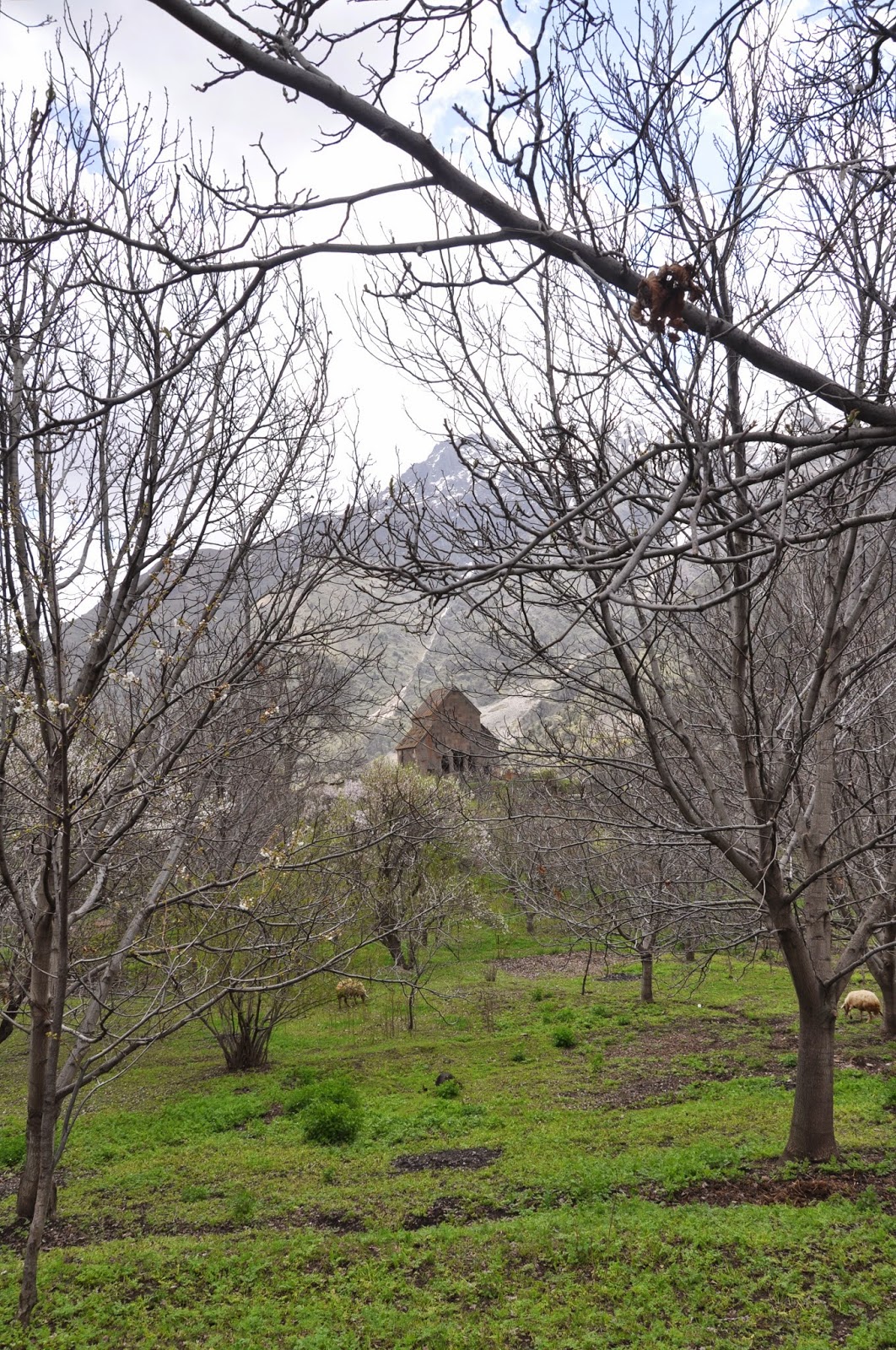The weather seemed to be shifting as we headed towards the Selin Pass (2,410 m) so as to visit the 14th century Selin Caravanserai, said to be one of the best preserved caravanserais in the world. Constructed of basalt with a roof of flat tiles it is situated just below the summit of the pass, thus affording wonderful views down onto the valley.
Having a single entrance was meant to make it more defensible against thieves. To the left of the doorway of the entrance vestibule there is the image of a griffin, while to the right there is a lion. The main hall division into three naves had the merchants use the narrower side ones, whilst the animals were kept in the central one. Light and ventilation were provided by small openings in the roof, but the use of torches in its interior is said to have been necessary.
The main idea for having visited such a place was to allow us to capture what it must have been like to be a "moving" merchant in the 14th century.
By the time we left an extreme coldness had settled in and we could barely move without shivering.
Our next stop was the little village of Yeghegis, said to have had two separate periods of prosperity in the past: the first during the Syunik princedom in the 10th and 11th centuries, at the end of which due to an earthquake everything seems to have been destroyed and the second one from the 13th century through to the 15th under the Orbelians.
Right at the entrance of the village a 17th century Basilica church located on the right hand side as we walked up the hill caught our attention because of some of the main façade's decoration with two rather interesting Harpis.






As we kept climbing up we came across a few cow excrements being dried in the open, mostly in flat round shapes and said to still be used for heating and setting fire purposes.



We unexpectedely came to a beautiful open area from which we could see the 13th century Zorats church a little father to the right. Dedicated to St. Stephen it is considered rather unusual by Armenian standards, once the roof is said to have been built just to cover the altar in the centre. Its open-air structure having been used for men and horses to be consecrated beofre setting off for battle.
We were told that down on the valley a Jewish cemetery had been discovered in 1996, having since then been considered one of the oldest known in the world. On the evidence of the discovered graves, Jews probably arrived in the area in the 13th century during the period of the Mongol rule and were most certainly engaged in flour milling.







The little walk through the village was really worth it, even if we didn't come across anyone to talk to, which could have been even more interesting.
It was soon time for lunch and this time we were in for a surprise, once the selected "restaurant", or rather in the shape of singled out open booths surrounded by shrubbery and overlooking the river Yeghegis was quite charming, particularly because we could listen to the river current throughout the meal, which added some unexpected "charm" to it.





























No comments:
Post a Comment